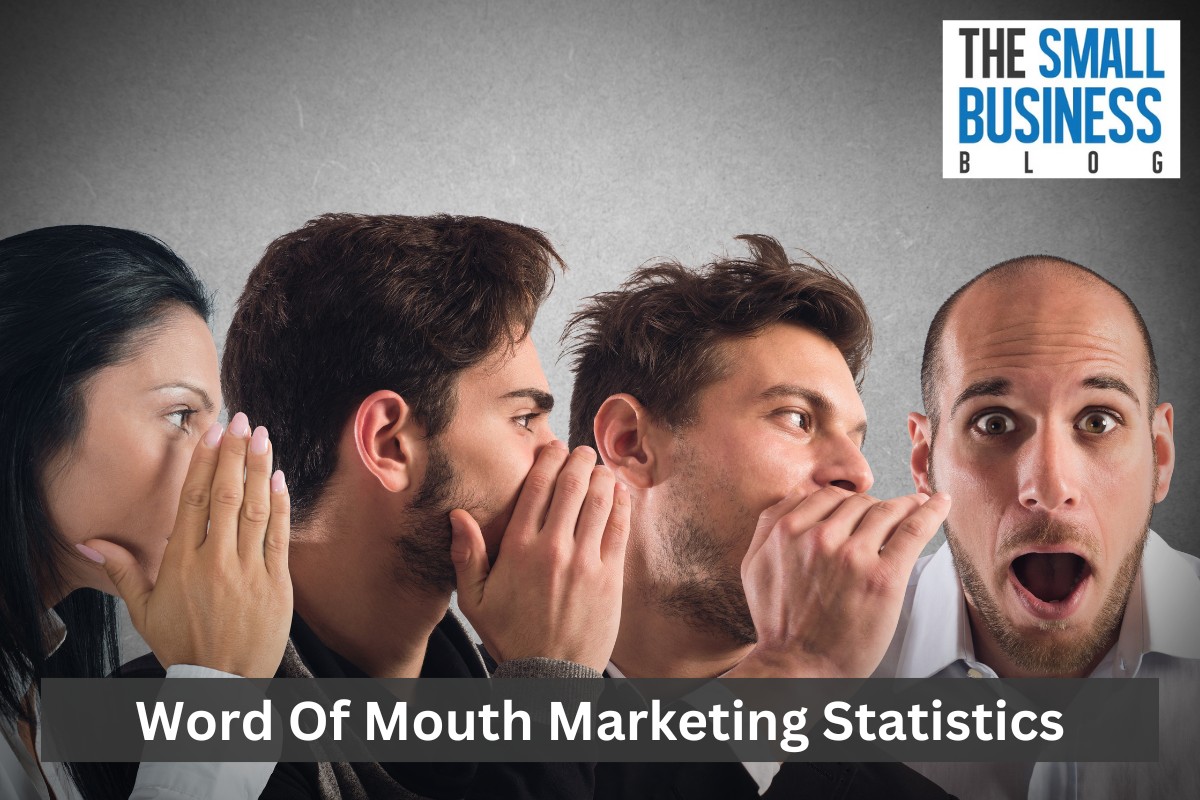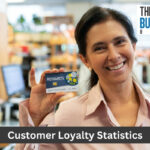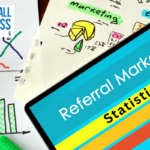Word-of-mouth marketing has been happening since the first product was invented.
In its basic form word-of-mouth happens when you ask friends and family for reviews on a product or brand.
If they have personal experience and they share it with you, they are performing word-of-mouth marketing.
But, that doesn’t mean it is positive!
For this type of marketing to be positive people generally volunteer information about a product or brand without being asked.
You’ll have done it before.
It’s when you’ve been so impressed with a product or service that you simply feel you have to share it with others.
In the past this was literally by word-of-mouth, verbally telling someone.
Today, digital technology allows you to tell everyone over the internet.
As the following word-of-mouth marketing statistics show, it’s a lot more effective because you can reach a lot more people!
This type of marketing is something that all businesses need to embrace, if they don’t they will lose potential sales.
In essence, it’s another way to promote your goods by getting customers to recommend your service to others.
Word-of-mouth marketing is generally free, you simply need to get people talking positively about your products.
Post Contents
- 1 Key Statistics
- 2 Top Word Of Mouth Marketing Statistics
- 2.1 1. Word Of Mouth Marketing Produces $6 Billion Of Sales Annually
- 2.2 2. 90% Of People Are More Likely To Buy When Recommended By A Friend
- 2.3 3. Word of Mouth Marketing Produces Five Times More Sales Than Any Other Marketing Type
- 2.4 4. Emotionally Connected Brands Get Three Times Better Word Of Mouth Responses
- 2.5 5. 28% Of Consumers Feel Word Of Mouth Has A Significant Effect On Brand Reputation
- 2.6 6. 64% Of Marketing Professional See Word Of Mouth Marketing As The Most Effective
- 2.7 7. 70% Of Businesses Intend To Spend More On Digital Word Of Mouth Marketing
- 2.8 8. 43% Of Professionals Expect Word Of Mouth To Boost Sales
- 2.9 9. 23% Of People Talk About Products Daily
- 2.10 10. Facebook Is The Most Trusted Media For Word Of Mouth Marketing
- 2.11 11. 21% Of People Lose Trust In A Brand After Negative Word Of Mouth
- 2.12 12. 32% Of People Discover Podcasts Through Word Of Mouth
- 2.13 13. In 2020, 17% Of Amazon Prime Visitors Found Out About The Sale Via Word Of Mouth
- 2.14 14. 18% Of Generation X Find Products through Word Of Mouth
- 2.15 15. 23% Of People Buy Christmas Gifts After Word Of Mouth Recommendations
- 3 16. 37% Of Americans Choose A Restaurant Based On Word Of Mouth
- 4 Word Of Mouth Marketing Strategies
- 5 Summing Up
Key Statistics
- Word of mouth marketing produces $6 billion of sales annually
- 90% of people are more likely to buy when recommended by a friend
- Word of mouth marketing produces five times more sales than any other marketing type
- Emotionally connected brands get three times better word of mouth responses
- 28% of consumers feel word of mouth has a significant effect on brand reputation
- 64% of marketing professional see word of mouth marketing as the most effective
- 70% of businesses intend to spend more on digital word of mouth marketing
- 43% of professionals expect word of mouth to boost sales
- 23% of people talk about products daily
- Facebook is the most trusted media for word of mouth marketing
- 21% of people lose trust in a brand after negative word of mouth
- 32% of people discover podcasts through word of mouth
- In 2020, 17% of Amazon Prime visitors found out about the sale via word of mouth
- 18% of Generation X find products through word of mouth
- 23% of people buy Christmas gifts after word of mouth recommendations
- 37% of Americans choose a restaurant based on word of mouth
Top Word Of Mouth Marketing Statistics
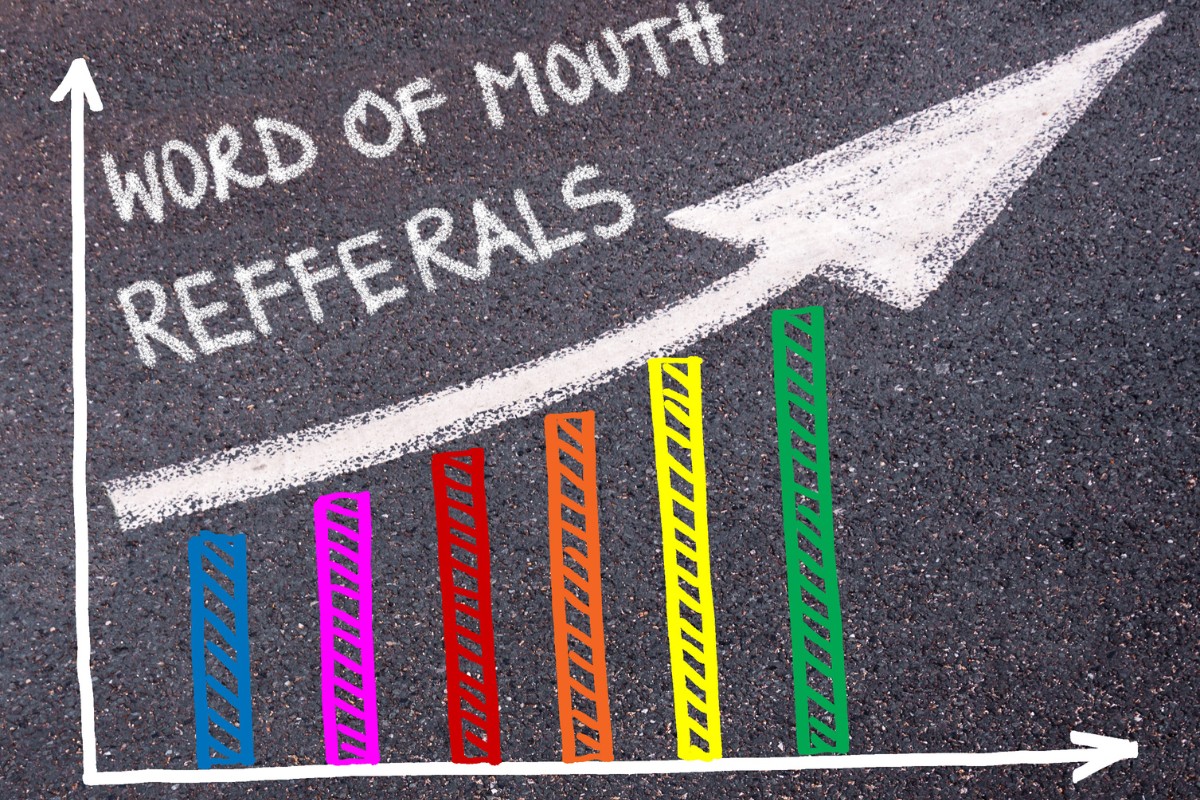
1. Word Of Mouth Marketing Produces $6 Billion Of Sales Annually
The latest figures reveal that word-of-mouth marketing is responsible every year for $6 billion worth of sales across the planet.
The figure has gradually increased each year, in line with inflation and price hikes.
The contribution to sales is impressive.
In fact, this figure represents 13% of all consumer sales, highlighting just how important word-of-mouth marketing is in the digital age.
(Statista)
2. 90% Of People Are More Likely To Buy When Recommended By A Friend
In general, a friend is someone that looks out for you.
They will make sure you aren’t taken advantage of and help you make the right decision in difficult times.
In short, they are someone you trust and can rely on.
A recent survey by Forbes confirmed the importance of friends in the buying process.
The study found that people were 90% more likely to buy something if a friend recommended it.
Of course, a business can’t know who is friends with whom and which ones are likely to purchase their products.
That’s what makes customer service so important.
The better the service, and the quality of the product, the more likely it is your brand or product will be recommended.
That’s without any marketing campaign.
(Forbes)
3. Word of Mouth Marketing Produces Five Times More Sales Than Any Other Marketing Type
It’s often difficult to judge the success of a marketing campaign.
The easiest way is to offer a discount via a unique code.
Each marketing campaign has its own unique code.
This allows the business to track where a sale has originated from.
When it comes to word-of-mouth recommendations the best option for a business is to offer a discount for every friend introduced.
A business can easily track physical referrals although it’s harder to identify other referrals which have resulted in sales.
The latest research suggests that you’ll get five times better results with word-of-mouth referrals compared to any paid advertising.
All you have to do is make sure people are happy to recommend you.
(LinkedIn)
4. Emotionally Connected Brands Get Three Times Better Word Of Mouth Responses
Creating an emotional connection via a marketing campaign is difficult.
Yet, according to the latest study by Forbes, it’s essential to get the best responses from consumers.
The study found that people who connected emotionally with the brand were three times more likely to purchase a product and become loyal customers.
This approach is easy to work into videos as marketers can focus on emotions more than a product.
Simply creating a funny story can be enough to put a brand on someone’s radar.
However, with word-of-mouth, it’s generally harder to create the required emotional intensity.
The simplest approach is to invest in the customer experience, allowing existing customers to feel connected.
This will be conveyed in any recommendations they make.
(Forbes)
5. 28% Of Consumers Feel Word Of Mouth Has A Significant Effect On Brand Reputation
If you are considering purchasing a product what is most likely to persuade you?
The company telling you the product is excellent, a video showing it in use, online reviews, or a friend with personal experience?
For most people, a friend’s opinion is worth considerably more than anyone else’s.
After all, you know and trust them.
However, the truth is that online reviews and even product demonstration videos can also affect someone’s decision-making.
The bottom line is simple: consumers value other people’s opinions, even if they don’t know them.
The study shows that 28% of respondents felt that word-of-mouth would make a fundamental difference in their view of a product or brand.
It can change opinions positively or negatively.
(Forbes)
6. 64% Of Marketing Professional See Word Of Mouth Marketing As The Most Effective
A recent LinkedIn survey of marketing professionals found that well over half, 64% to be exact, of them felt word-of-mouth marketing was the most effective approach to promoting a product.
It’s easy to see why as people are more likely to buy a product or trust a brand when it has been personally recommended.
The challenge for these professionals is to convince existing consumers to recommend them to others without asking them to.
Many businesses are encouraging this type of marketing by offering rewards.
For example, a discount when you introduce a friend to the brand or they buy a specific product.
The fact that word-of-mouth works and these incentives are offered reflects how invested businesses are in this type of marketing.
(LinkedIn)
7. 70% Of Businesses Intend To Spend More On Digital Word Of Mouth Marketing
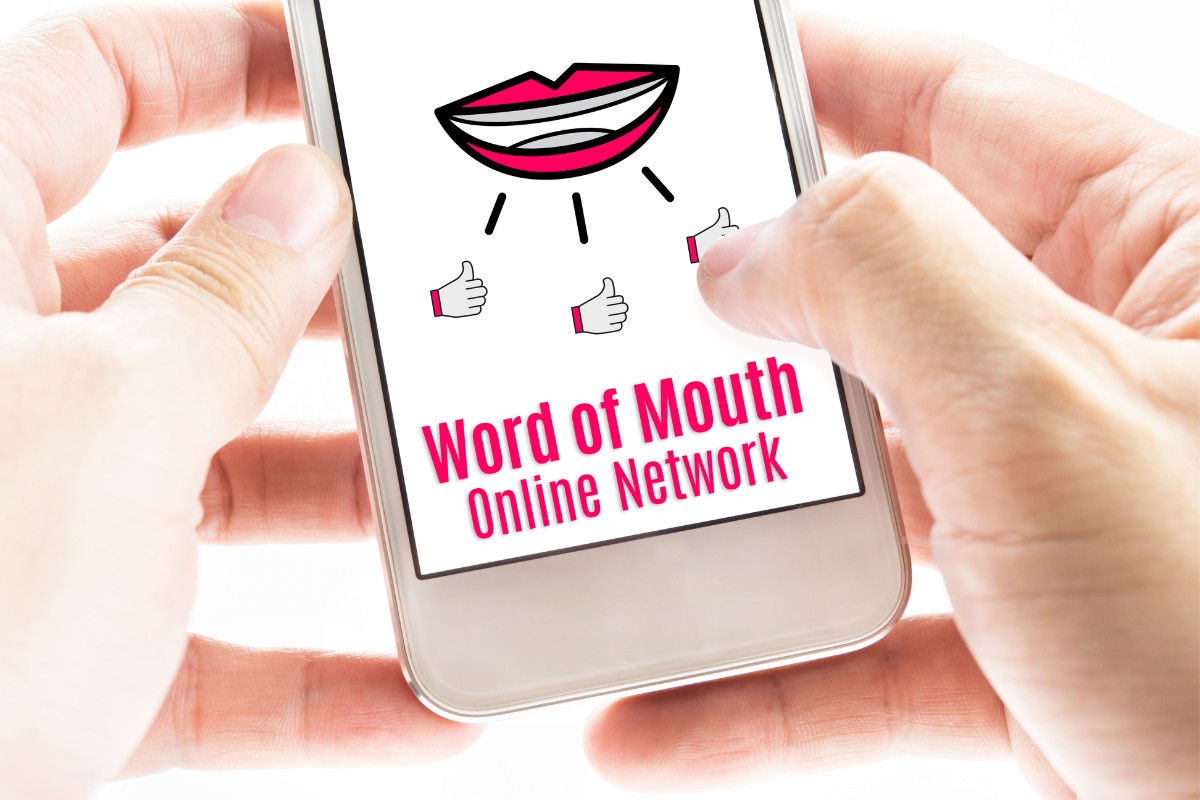
Rewind 15 years and the internet was still comparatively new.
Certain sites were developing but many businesses still relied on old-fashioned marketing and sales approaches.
The digital revolution, particularly improvements in mobile devices, means that an increasing number of people are handling all their affairs online.
The internet has proved essential when researching products and looking for advice.
Naturally, businesses need to react and change.
Word-of-mouth has always been a good marketing tactic.
It is still effective in a digital world, but the approach to it simply needs to change.
To accommodate this, a recent survey by Forbes highlighted that 70% of those surveyed intended to spend more on digital word-of-mouth marketing.
This will allow them to make the most of the available opportunities.
29% of those surveyed felt that they were better off investing in traditional, offline word-of-mouth marketing campaigns.
Just 1% of those asked were unsure of their future word-of-mouth marketing efforts.
(Forbes)
8. 43% Of Professionals Expect Word Of Mouth To Boost Sales
Word-of-mouth marketing, when done properly, should result in a positive view of a brand or a specific product.
This will encourage those told to purchase the item or trust the brand themselves.
Naturally, word-of-mouth only works if those told are either looking for the product or feel it would be beneficial.
That’s why this marketing approach doesn’t result in a 100% success rate.
However, a recent survey shows that 43% of marketers do expect this approach to boost sales.
Equally, an impressive 82% of marketers use this approach to boost brand awareness and believe it works.
Word-of-mouth can help businesses reach potential consumers before they even know they are interested in what you’re offering.
(Forbes)
9. 23% Of People Talk About Products Daily
You, like most people, can’t help but share your daily experiences with those people that matter in your life.
Included in those experiences will be how you feel about a brand or product that you’ve just bought or tested.
Sharing information about the product can help you decide how useful it is to you and others.
You’re not alone in this approach.
Recent studies show that 23% of people will talk about products every day to loved ones.
This can result in increased sales or a reduction in reputation.
It all depends on how the consumer sees your product.
As a business, you can’t control what they say.
But, you can make sure they have the best possible service.
(Semrush)
10. Facebook Is The Most Trusted Media For Word Of Mouth Marketing
Facebook has over three billion active users.
It’s the biggest social media site on the planet and one of the most trusted.
Of course, it’s had its ups and downs.
But, partly thanks to Twitter’s current slump it is seen as reliable and trustworthy.
In fact, it’s regarded as the most trusted media for word-of-mouth marketing.
That makes it the preferred place to go if you’re looking for honest opinions on almost any brand in existence.
After Facebook, Google takes second place, and Twitter third.
All of them are perfectly created to allow consumers to share their experiences and attract new customers.
(Semrush)
11. 21% Of People Lose Trust In A Brand After Negative Word Of Mouth
It can take years to build a good brand reputation.
You need to offer first-class customer service, coupled with a high-quality product.
Most importantly, you also need to monitor all complaints and issues, dealing with them in a polite, professional, and timely manner is essential if you want to protect your brand reputation.
A badly handled complaint can result in a negative review.
A negative online review works in the same way as word-of-mouth advertising.
It tells everyone that your product and/or service is not up to standard.
The latest survey by Semrush shows that 21% of people will lose faith in your brand after you’ve had a negative review.
That’s regardless of whether they have been a customer in the past.
The good news is they are disillusioned; the right approach can turn them back into customers.
The same is not true for the 26% of people who will actively avoid a brand if someone they trust tells them about a negative experience.
(Semrush)
12. 32% Of People Discover Podcasts Through Word Of Mouth
Podcasts are extremely popular.
They are easy to listen to, allowing anyone to catch up on their favorite topic at almost any time of the day or night.
However, with so many podcasts online, it can be difficult to find the right one.
It’s got to discuss the topic or product you’re interested in and perhaps recommend products.
In this sense, choosing a podcast can be difficult, you won’t want to try all of them.
That’s why people look to recommendations.
As many as 32% of podcasts are discovered via word-of-mouth.
Advertisements do exist but people are generally more convinced regarding the quality of a podcast if they are recommended by a friend.
The same approach applies to all types of products.
(Semrush)
13. In 2020, 17% Of Amazon Prime Visitors Found Out About The Sale Via Word Of Mouth
It’s safe to assume most of the world knows about Amazon Prime Day when everything is sold at a discount.
Unfortunately, this assumption would be incorrect.
A surprising number of people still don’t know about Amazon Prime Day.
In fact, in 2020 studies suggested 17% of all the visitors to the Prime site came via a word-of-mouth recommendation.
It’s not just Amazon Prime.
Research shows that 20% of Smartphone apps are discovered through word-of-mouth.
It illustrates perfectly why businesses need to offer a premium service and get the best word-of-mouth promotion possible.
It’s easy for people to recommend a product or service if everything about the service is excellent.
(Semrush)
14. 18% Of Generation X Find Products through Word Of Mouth
Marketers need to understand who is attracted to their product and which age ranges are most likely to purchase through an online store compared to the physical one.
Both types of stores are acceptable, the issue for most people is whether the product and the supplier are as good as they should be.
Listening to word-of-mouth is the best approach to ensure you’ve located the best products currently available.
A recent study by Semrush highlighted that 18% of Generation X will choose a product based on a word-of-mouth recommendation.
16% of baby boomers will adopt the same approach, while just 12% of Generation Z rely on word-of-mouth marketing.
Interestingly, in Australia, 38% of people find a new brand via word-of-mouth.
In contrast, just 28% of the population in Romania do the same.
(Semrush)
15. 23% Of People Buy Christmas Gifts After Word Of Mouth Recommendations
Buying Christmas gifts is generally hard.
The modern world encourages people to purchase things when they want them, which doesn’t leave much room for gift-giving.
To help people make the right purchase decision, an increasing number of them are looking for recommendations from others.
Word-of-mouth marketers can take advantage of this by creating recommendations for specific products.
With a little consumer support, a product can easily be turned into a Christmas must-have.
A survey by Semrush found that 23% of people will seek recommendations when choosing a Christmas good.
The same 23% of people would listen to word-of-mouth for Valentine’s Day gifts.
(Semrush)
16. 37% Of Americans Choose A Restaurant Based On Word Of Mouth

A perfect example of word-of-mouth marketing in action is when Americans are trying to decide what restaurant to eat in.
Statistics show that 30% of people choose a restaurant they have already eaten in, simply because they know it.
A further 30% of people look at what coupons and vouchers they have collected and choose a restaurant based on this.
However, the biggest percentage is those that rely on friends and family advice.
An impressive 37% will choose a restaurant based on what they have been told about it.
In many cases, this is by friends and family.
Reviews are also commonly looked at and many consumers will check forums.
Positive reviews point to a good dining experience and encourage someone to book a table.
It’s not the only industry which relies heavily on word-of-mouth.
31% of electronic purchases are influenced in the same way, as are 50% of beer purchases.
(Semrush)
Word Of Mouth Marketing Strategies
As the word-of-mouth marketing statistics show, you can’t control what people say about your business and products, even though it can make a fundamental difference to your success.
However, there are some strategies you can adopt to help ensure all word-of-mouth is positive.
Make It An Experience
If you want people to talk favorably about your products then give them a great experience.
It’s more than just selling them something, make the purchasing journey fun, and if possible, unique.
This will ensure customers have a good impression and pass on positive recommendations.
Handle Complaints Quickly & Fairly
While you will do your best, it’s impossible to keep everyone happy all the time.
Complaints can lead to negative word-of-mouth, but they don’t have to.
Make sure you have a good customer support team.
Every issue should be dealt with as quickly as possible, the customer should be kept up to date daily, and you should offer a fair solution.
It will help to ensure the customer is satisfied and offers positive word-of-mouth marketing.
Even if they are not happy, other customers will be able to see how you handled the issue and this can encourage them to purchase.
Offer Incentives
Perhaps the simplest way to build a positive word-of-mouth marketing campaign is to offer an incentive to existing customers.
Simply offered an array of discounts, increasing with the number of customers recommended.
Your existing customers will be happy to recommend your service to others in exchange for a discount.
It’s a win-win situation.
Product Info
It’s also a good idea to post honest product reviews, including a rating for each product online.
These will help potential customers make a decision and show that you are honest about your products.
That’s an excellent way to boost sales and attract new customers.
Seek Feedback
Finally, make sure there are channels available for customers to share information with you.
This should be actively encouraged.
Wherever possible, the feedback should be used to improve the product or service, helping you create positive advertising.
Summing Up
There you have it.
The above word-of-mouth marketing statistics clearly show that this approach to marketing your products and brand is invaluable.
The right word-of-mouth recommendation creates sales, while negative reactions can cost you customers and profit.
Every business should develop a clear marketing strategy that ensures you can take advantage of any issue, good or bad, and help it positively reflect your business.
It’s also a good idea to look at your analytics regularly.
This can help you identify your audience and identify their preferences, as well as their dislikes.
If you’re not already implementing word-of-mouth marketing then it’s time to start!







